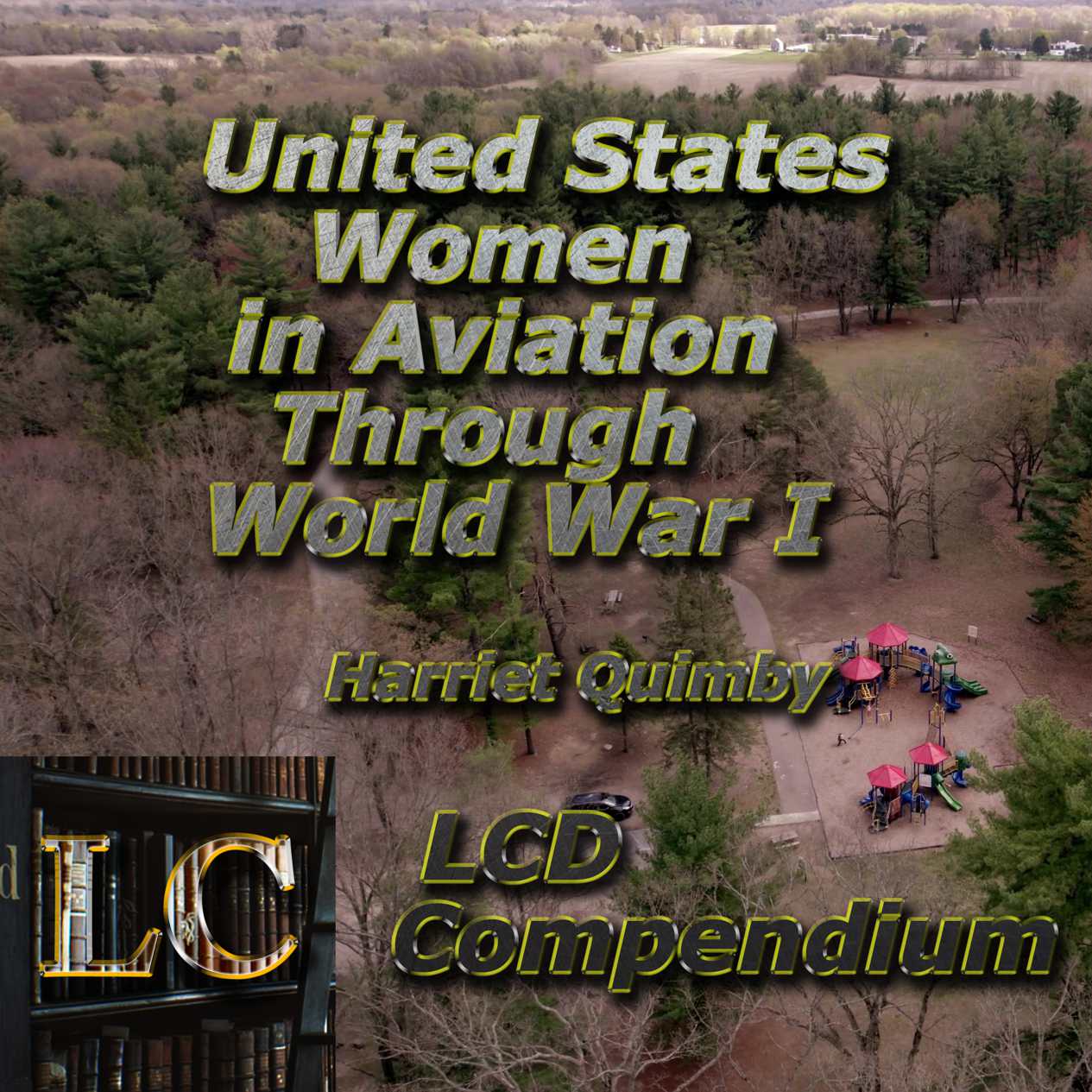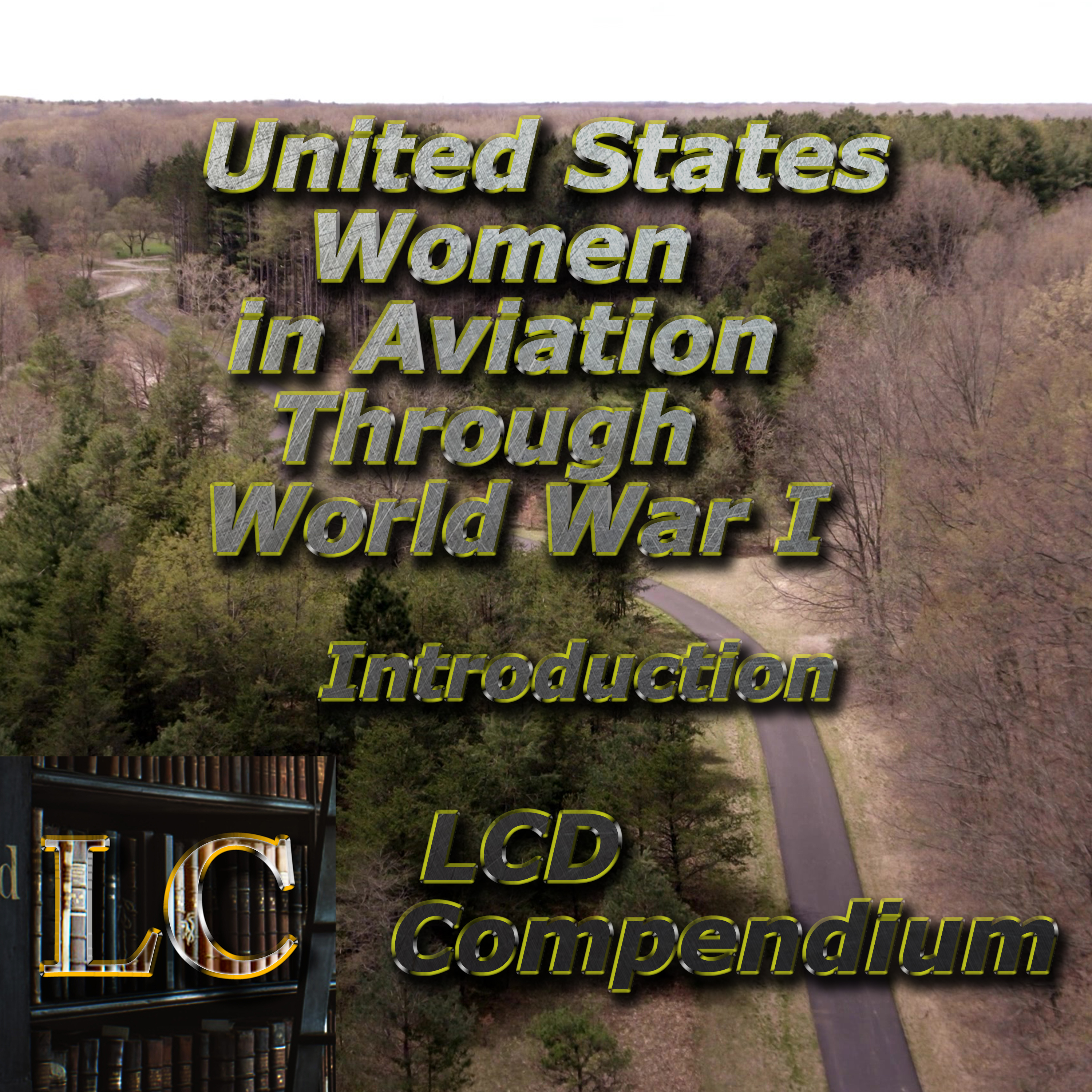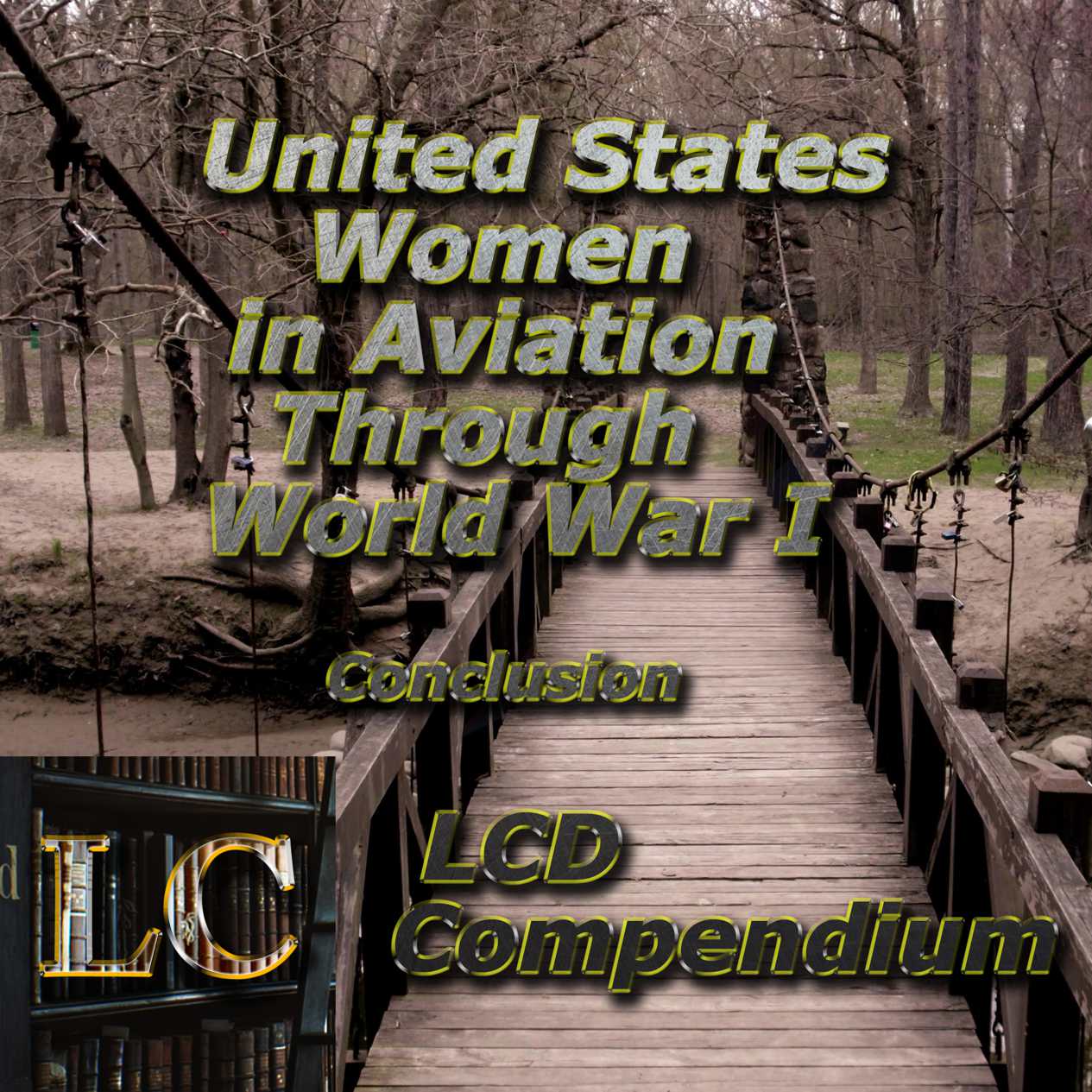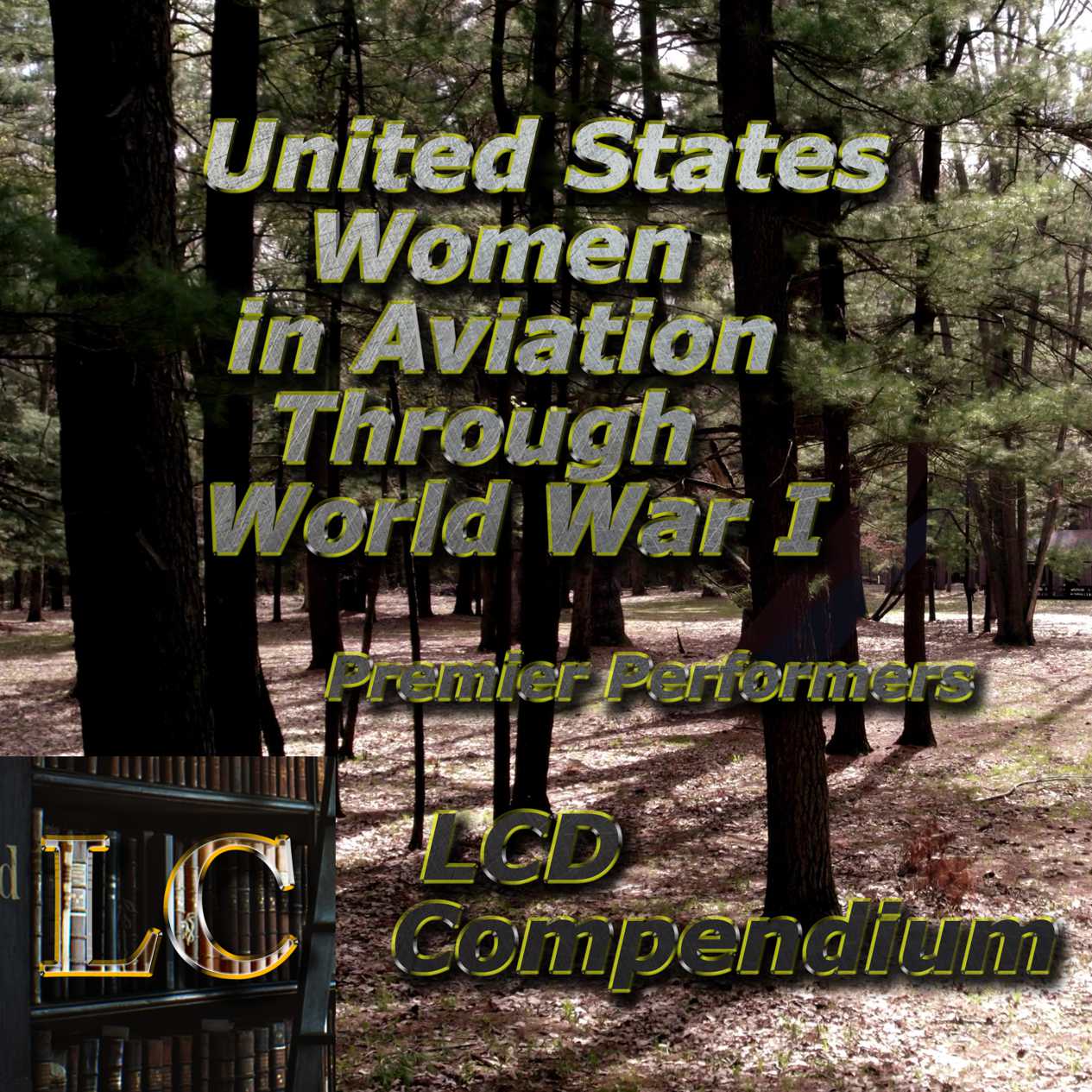Episode Transcript
1
0:00:00,000 --> 0:00:04,000
SERIES PUBLICATIONS OF THE. SMITHSONIAN INSTITUTION
2
0:00:04,000 --> 0:00:08,000
SMITHSONIAN STUDIES IN AIR AND SPACE NUMBER 2
3
0:00:08,000 --> 0:00:13,000
United States Women in Aviation through World War One
4
0:00:13,000 --> 0:00:15,000
by Claudia M Oakes
5
0:00:15,000 --> 0:00:26,000
Aerial Photography from Photations Visit Photations.com and www.PhotationsStore.com for more fine art photography
6
0:00:26,000 --> 0:00:32,000
Help support this series by visiting PhotationsDonations.com
7
0:00:32,000 --> 0:00:34,000
Harriet Quimby
8
0:00:34,000 --> 0:00:45,000
Although there may be some question about America’s first aviatrix, there is no question whatsoever about the first to receive her pilot’s license
9
0:00:45,000 --> 0:00:59,000
She was Harriet Quimby, the darling of her day In her plum satin flying costume, she captured the admiration of all who saw her fly or read of her exploits
10
0:00:59,000 --> 0:01:04,000
There is some mystery regarding Ms. Quimby’s origins, however
11
0:01:04,000 --> 0:01:31,000
She let it generally be believed that she had been born into a wealthy family on an orange plantation in Arroyo Grande, California, in 1884, and educated in private schools in America and Europe However, there is evidence that shows she was born in 1875, in Col. dwater, Michigan, the daughter of a farmer
12
0:01:31,000 --> 0:01:39,000
She was educated in public schools there, thanks to the sacrifice of her hardworking mother
13
0:01:39,000 --> 0:01:55,000
Her family did move to California, and there in 1902 Harriet took a job as a writer for the Dr. . amatic Rev. . iew in San Francisco, also doing some features for the Call and the Chronicle
14
0:01:55,000 --> 0:02:07,000
In 1903 she began writing for Leslie’s Weekly, a popular magazine of the time, and moved to New York as the publication’s drama critic
15
0:02:07,000 --> 0:02:39,000
In New York her circle of friends included many of the day’s most interesting people, among them those of the small but well known aviation community such as the Moisant brothers, John and Albert, and their sister Matilde Harriet’s interest in aviation was transformed into enthusiasm when she attended the 1910 Belmont Park Aviation Meet, 22 31 October
16
0:02:39,000 --> 0:02:57,000
She was so inspired, especially by John Moisant’s performance, that when she happened to see him that evening having dinner at the Hotel Astor, she asked him to teach her to fly He agreed, perhaps really not taking her seriously
17
0:02:57,000 --> 0:03:09,000
But Harriet refused to abandon the idea, even after John Moisant was killed while performing in New Orleans on 31 December 1910
18
0:03:09,000 --> 0:03:32,000
The Moisant School of Aviation was opened at Hempstead, Long Island, in April 1911, and Harriet began taking lessons there from André Houpert, in a Bleriot type 30 hp monoplane After four months and 33 lessons Harriet decided to try for her license
19
0:03:32,000 --> 0:03:55,000
Her review board consisted of two judges from the Aero Club of America, which (under the authority of the Fédération Aéro nautique Internationale) was the licensing agency for the United States To obtain a license she had to land her aircraft within 100 feet of where she left the ground
20
0:03:55,000 --> 0:04:25,000
On 31 July 1911, on her first test, she landed too far from the spot, but the next day she landed seven feet nine inches from the mark Thus on 1 August 1911, Harriet Quimby became the first licensed woman aviator in the United States, receiving Fédération Aéronautique Internationale (Aero Club of America) certificate number 37
21
0:04:25,000 --> 0:04:35,000
She was the second woman in the world to receive a license, the Baroness Raymonde de la Roche of France having received hers in 1910
22
0:04:35,000 --> 0:04:53,000
Almost immediately Harriet was asked to join the Moisant International Aviators, an exhibition team, and on 2 September 1911, she participated in a meet before 20,000 spectators on Staten Island
23
0:04:53,000 --> 0:05:11,000
Later that month she entered a meet at the Nassau Boulevard airfield, during which she beat the celebrated French aviatrix, Hélène Dutrieu, in a cross country race, winning dollar in the amount of 600
24
0:05:11,000 --> 0:05:28,000
The next month she went with the Moisant group to Mexico City to perform in the inauguration ceremonies for President Francisco Madero While there, Harriet became the first woman to fly over Mexico City
25
0:05:28,000 --> 0:05:37,000
She still contributed to Leslie’s Weekly and wrote an account of her Mexico trip for that magazine
26
0:05:37,000 --> 0:05:52,000
She also sent a very complete report of her next and perhaps most famous exploit—the first flight across the English Channel by a woman pilot Leslie’s Weekly and the London Daily Mirror were her sponsors
27
0:05:52,000 --> 0:06:01,000
Her manager and advisor was A Leo Stevens, friend of the Wright brothers and famous balloon pilot
28
0:06:01,000 --> 0:06:05,000
She sailed for Europe on 7 March 1912
29
0:06:05,000 --> 0:06:31,000
In France she acquired a new Bleriot 50 hp monoplane, which she had shipped to Dover Harriet was not to be the first woman to cross the English Channel by air, however for on 2 April 1912, an Englishwoman, Miss. Eleanor Trehawke Davies, crossed, but only as a passenger with the British flyer Gustav Hamel
30
0:06:31,000 --> 0:06:42,000
Harriet continued, undaunted either by Miss. Davies’ flight or by the weather The latter was so bad that she could not even test fly her new aircraft
31
0:06:42,000 --> 0:06:49,000
Sunday, 14 April, was a lovely day, perfect for a Channel flight
32
0:06:49,000 --> 0:07:03,000
But Harriet had made a personal rule never to fly on a Sunday The weather closed in again on Monday, but on Tuesday 16 April 1912, at 5:30 A
33
0:07:03,000 --> 0:07:07,000
M , Harriet took off from the heights of Dover
34
0:07:07,000 --> 0:07:18,000
Gustav Hamel, who had been advising her, had been able to make a short flight in the aircraft prior to takeoff to make sure it ran smoothly
35
0:07:18,000 --> 0:07:43,000
From the beginning Hamel had been skeptical about a woman’s ability to pilot an aircraft across the Channel He even went so far as to suggest that he himself dress up in Harriet’s satin flying costume, pilot her plane across the Channel, and land at a deserted spot where Harriet would be waiting to take the credit
36
0:07:43,000 --> 0:08:03,000
Harriet, of course, refused his offer so Hamel helped her as much as he could, even instructing her on the use of a compass in flight, a technique which was new for Harriet He also tied a hot water bottle around her waist as protection from the wind’s chill
37
0:08:03,000 --> 0:08:09,000
Almost immediately after takeoff Harriet found herself in thick clouds
38
0:08:09,000 --> 0:08:25,000
She dropped from an altitude of 2000 feet to about 1000 feet, and though dazzled by the rising sun, could see the shores of France Being unfamiliar with the French coast, Harriet could not find her goal, Calais
39
0:08:25,000 --> 0:08:39,000
She descended onto a flat, sandy fishing beach and was immediately surrounded by villagers who had heard of her flight She was at Hardelot, 25 miles south of Calais
40
0:08:39,000 --> 0:08:47,000
She was feted in Paris and London and returned in triumph to the United States in May
41
0:08:47,000 --> 0:09:05,000
She brought with her a new all white Bleriot 70 hp two seat monoplane with all the latest improvements During that summer she performed at various aviation meets, occasionally carrying passengers
42
0:09:05,000 --> 0:09:23,000
In late June she shipped her aircraft to Boston, where from 29 June to 7 July she planned to take part in the Harvard Boston Aviation Meet held at Squantum Airfield near Dorchester
43
0:09:23,000 --> 0:09:30,000
The manager of the event was William A P Willard, father of Charles F
44
0:09:30,000 --> 0:09:38,000
Willard, the noted Curtiss exhibition pilot Many famous aviators were participating, among them Glenn L
45
0:09:38,000 --> 0:09:44,000
Martin, Lincoln Beachey, Earle Ovington, and Blanche Scott
46
0:09:44,000 --> 0:10:10,000
Late in the day on 1 July, Harriet and William Willard climbed into her Bleriot for a short flight over Dorchester Bay and around Boston Light Willard was a large man, and her manager, Leo Stevens, cautioned him to remain very still out of fear that almost any movement on his part could upset the balance of the aircraft
47
0:10:10,000 --> 0:10:13,000
The flight went well at first
48
0:10:13,000 --> 0:10:30,000
Harriet rounded Boston Light and came back over the field at about 3000 feet, then circled while slowly descending to 1000 feet over the Bay Suddenly the plane dove sharply, and Willard was thrown from his seat
49
0:10:30,000 --> 0:10:44,000
Without his weight the Bleriot momentarily righted itself, but then flipped over, tossing Harriet out also The two landed in about five feet of water, and both were killed
50
0:10:44,000 --> 0:10:52,000
Ironically, the plane came out of its dive and glided to a landing with relatively little damage
51
0:10:52,000 --> 0:11:05,000
Blanche Scott was in the air at the time, competing for the women’s duration prize She abandoned her attempt after the accident and landed her aircraft
52
0:11:05,000 --> 0:11:31,000
There was a great deal of speculation by leading aviation authorities as to the cause of the tragedy: Leo Stevens blamed Willard, thinking he probably ignored the advice given him and leaned forward to congratulate Harriet on a successful flight Earle Ovington thought that one of the two left hand control wires had become entangled in the warping lever
53
0:11:31,000 --> 0:11:49,000
Lincoln Beachey speculated that Harriet might have fainted or that she had attempted to descend at too steep an angle Glenn Martin pointed out that had Harriet and Willard been using seat belts, the accident might not have occurred
54
0:11:49,000 --> 0:11:57,000
Whatever the reason for the crash, Americans mourned their beloved Harriet Quimby



